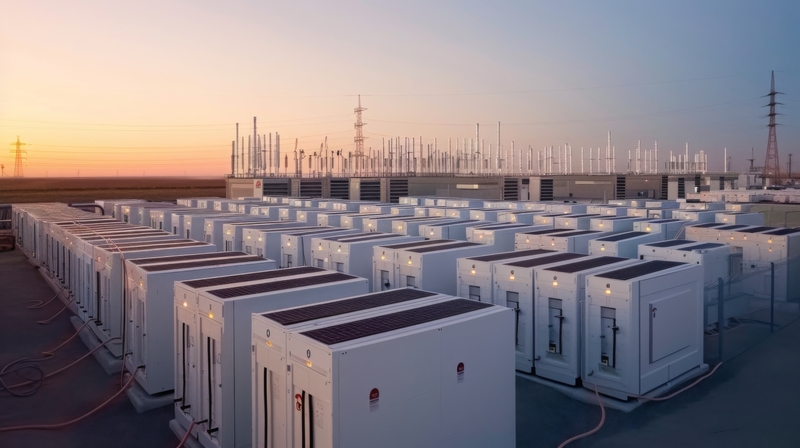Spain leads the EU in renewable energy generation, but its position in terms of storage capacity from photovoltaic and wind power plants is not comparable. This unused energy could be available in the system to counteract events like last week’s blackout. Last year, renewable energy generation reached a historic high, with 56.8% of consumed electricity coming from these sources. However, in terms of storage capacity, Spain remains far behind European countries such as the United Kingdom, Germany, and Italy, which also stand out for their high renewable production.
A crucial factor in adjusting prices and providing additional electricity in the event of events like the blackout on April 28 is the ability to store the electricity generated by photovoltaic or wind power plants. In the record year of 2024, Spain produced approximately 148,000 GWh, representing a 10.3% increase compared to 2023.
To address the storage problem, two systems are being considered in Spain: hydraulic pumped-storage power plants, which use two reservoirs of different heights to store water and generate electricity on demand, and, to a lesser extent, batteries with electrochemical technology. Unfortunately, neither of these systems reaches the level equivalent to Spain’s renewable electricity generation. The industry laments that there is still “no market” that makes investment in battery storage attractive, and government subsidies are so far insufficient to ensure a return of investment.
The importance of greater use of these technologies became clear when the Spanish Photovoltaic Union (UNEF) noted the day after the blackout that there are photovoltaic systems with battery storage that are operating reliably. On April 28, autonomous photovoltaic systems operated smoothly in “island mode” despite being disconnected from the grid.
Sara Aagesen, the third vice president and minister for ecological transition, emphasized in the current crisis following the April 28 power outage that the focus should be on increasing the electrical interconnection of the Iberian Peninsula with France, rather than solely on the need for more storage capacity. This contradicts previous efforts, which have paid too little attention to storage since the days of Teresa Ribera, the former minister.
Aagesen argues that the power outage in Spain would have caused “less of a problem” if it had occurred in Germany, which is better connected to the rest of Europe. The level of interconnection with France is well below the EU targets of 10% in 2020 and 15% in 2023, and a level of less than 3% is forecast for 2025. “The more interconnected the system is, the more robust it is,” Aagesen explained, announcing that they will collaborate in a telematic meeting with French Minister of Industry and Energy Marc Ferracci to determine the causes of the blackout and address this issue at the informal EU Energy Council, which will take place in Warsaw next week.
Despite existing interconnections, both the electricity sector and the data show that storage capacity in Spain is not consistent with the positive figures for renewable energy generation. According to the European Energy Storage Association, the EU had 89 GW of installed storage capacity in 2024, including 53 GW from pumped hydro and 35 GW from chemical storage. In Spain, according to Eurostat, storage capacity currently totals 7.4 GW, with a further 3.5 GW announced. This represents only 8.3% of the total EU storage stock.
“We are moving forward in terms of storage capacity,” Aagesen explained, pointing to the government’s “ambitious” target of 22.5 GW by 2023—almost triple the current capacity—as well as the investments made in this area as part of the European Recovery Fund. “These initiatives are intended to enable the entry of at least 4.5 GW and provide an additional €700 million, which I hope will generate an additional 4.5 GW,” she added.
This €700 million comes from European funds for storage projects, which the ministry intends to make available through the Institute for Energy Diversity and Conservation (IDAE). The plan is to allocate these funds before the end of the year to avoid losing resources from the EU. However, this haste is seen as problematic by many in the sector, as it does not align with the nascent activities in Spain and the unclear This corresponds to the economic prospects for investors. Smaller players in the electricity sector are expressing concern about the slow allocation of this economic aid, which they blame for the delay in storage in Spain, despite the fact that renewable energy development has been advancing.
In addition, other funds from the past are available, including €50 to €150 million from European funds to finance innovative storage projects.
As one entrepreneur in the renewable energy sector points out, the cause of the current challenges also lies with Aagesen’s predecessors, who now work in the European Commission. Although they are convinced of the ecological transition and the use of renewable energy, smaller players believe that this has hampered the development of storage, as hydraulic pumped storage requires long periods of operation – up to 10 years – and the interest of large energy companies in battery storage has so far been low.
UNEF also calls for increased storage to avoid situations like the one that occurred last Monday and wants to accelerate the “processing” of hybrid plants to link renewable parks with battery storage.
“Although batteries are already a technically and economically viable solution used worldwide, we still don’t have a truly modern electricity system in Spain that allows for their integration,” laments Miguel Marroquin of Our New Energy, calling on Spain to “remove barriers to development” and redesign the market to “value” storage and create “incentives” to invest in it.




